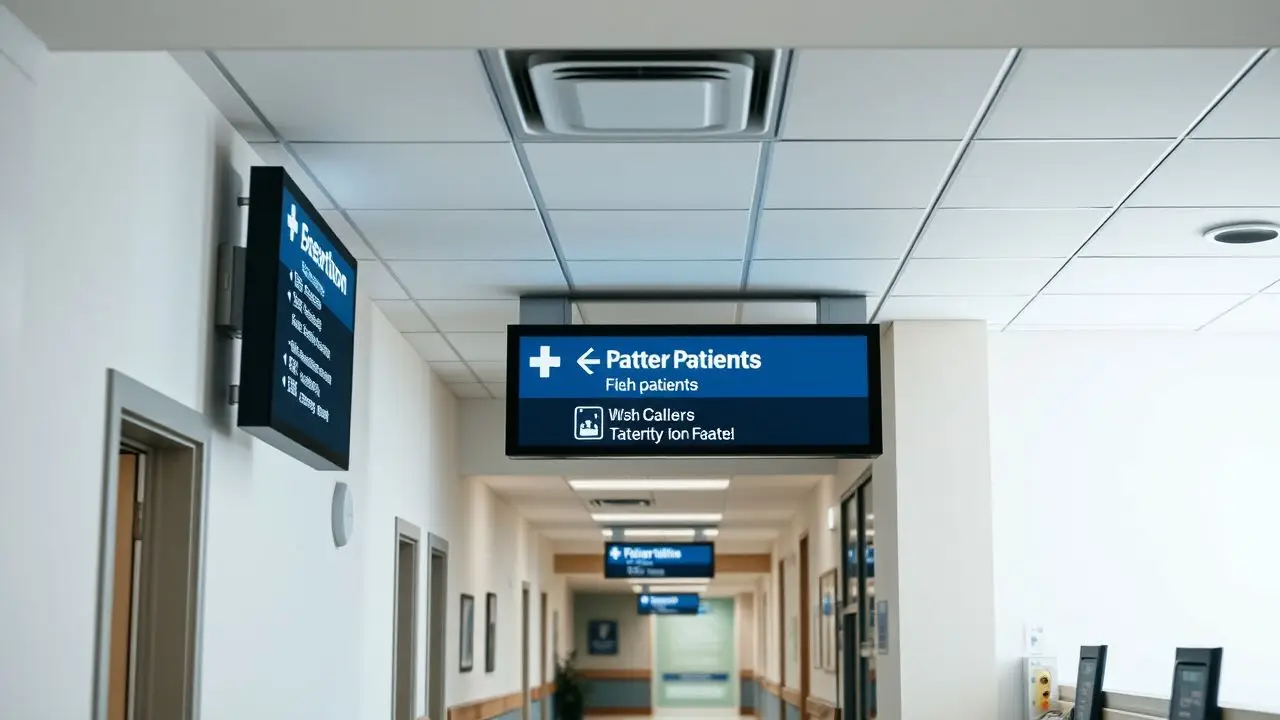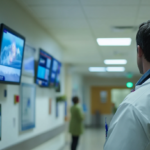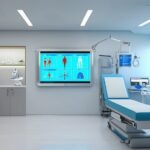Finding your way in hospitals and clinics can be hard. One fact is clear: digital signs make navigation easier. This post will show how these signs help people find their way and improve the patient experience.
Keep reading to learn more!
Key Takeaways
- Digital signs in hospitals help people find their way by showing clear directions and updates.
- These signs make visiting the hospital less stressful by giving real-time information about wait times and room changes.
- They use bright colors, large fonts, and interactive features to catch attention and guide visitors easily.
- Signs can show info in different languages, making them helpful for everyone.
- Future digital signs might use AI to give even better directions and updates.
Table of Contents
ToggleUnderstanding Wayfinding in Hospitals and Clinics
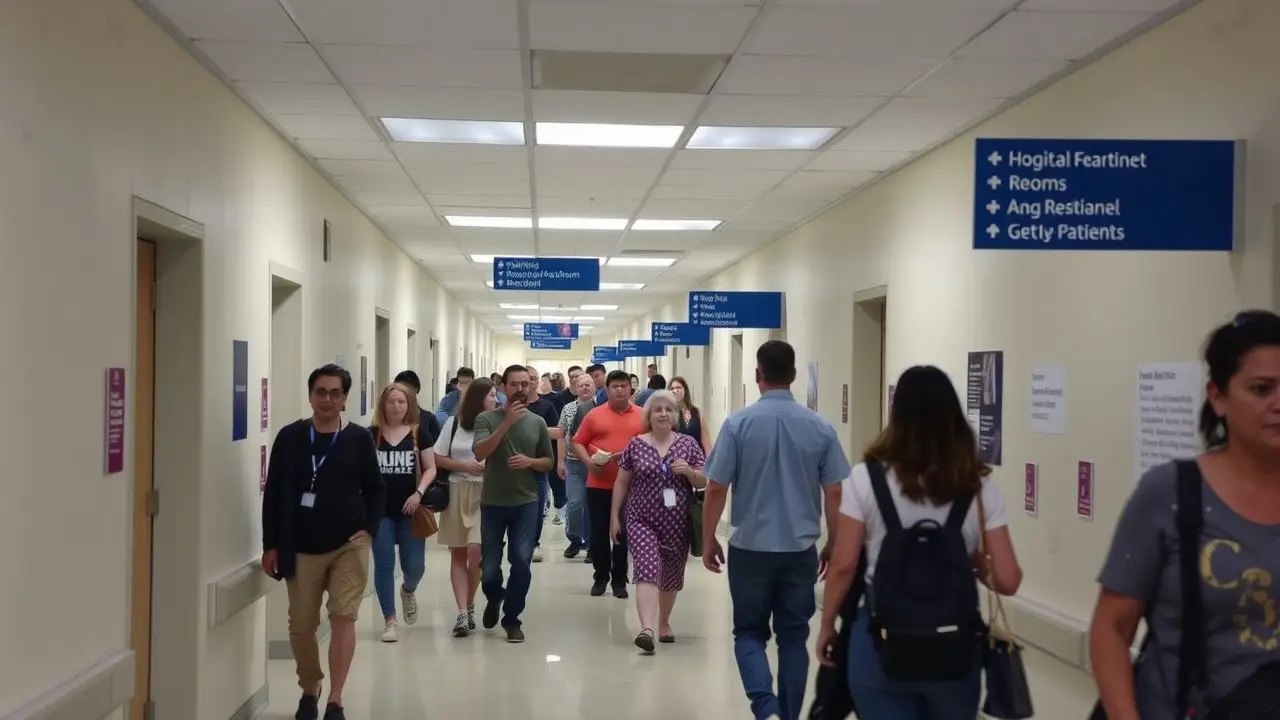
Wayfinding in hospitals and clinics helps people find their way. Good signs make it easier for patients and visitors to reach their destinations without stress.
Importance of effective signage

Effective signage is key in hospitals and clinics. It helps patients and visitors find their way easily. Clear signs reduce stress for those who are already anxious about their health.
Good hospital signage guides people to the right departments quickly, improving healthcare navigation.
Mistakes can happen without clear directions. Patients may miss appointments or take longer routes. Digital wayfinding solutions can help fix this problem. They provide real-time updates on room assignments and patient wait times, which boosts engagement and efficiency in healthcare facilities.
Key challenges in wayfinding design
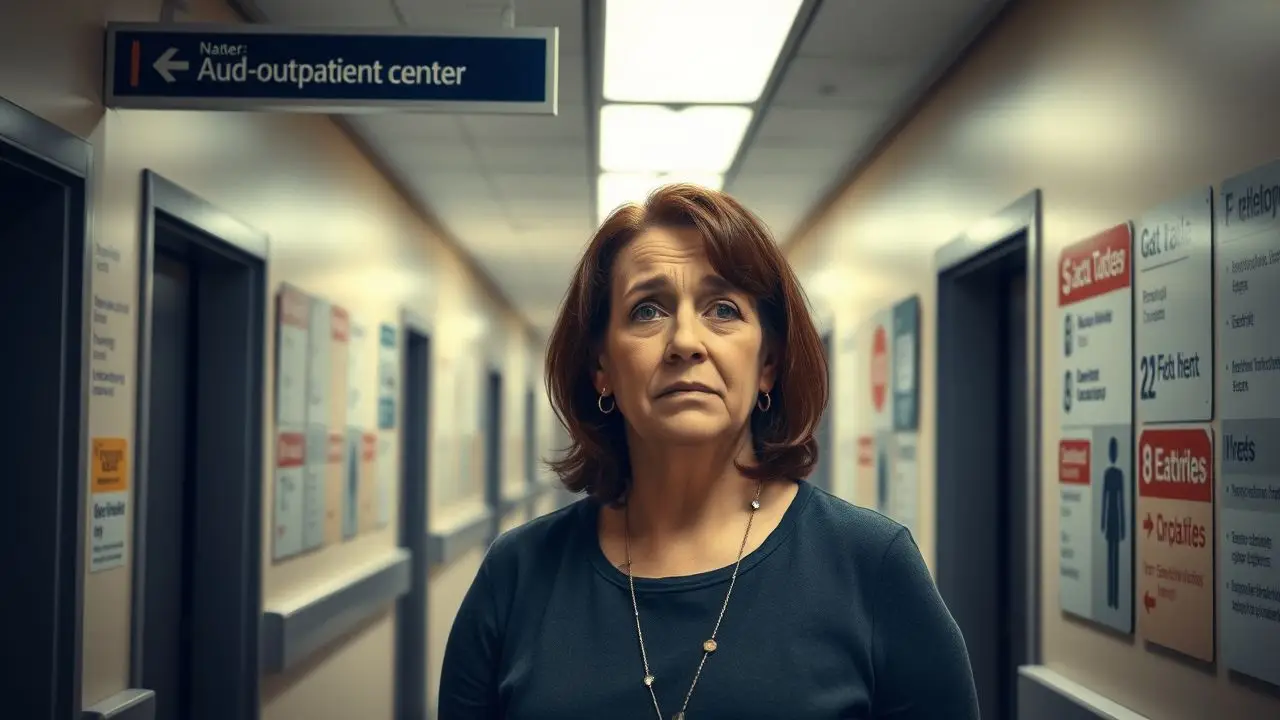
Wayfinding design in hospitals and clinics faces many challenges. Visitors often feel lost due to complex layouts. Long corridors and multiple floors add to this confusion. Traditional signs may not have enough information or clear directions.
This can make it hard for patients to find their way, especially in big outpatient centers.
Another issue is the fast pace of healthcare environments. Digital signage solutions can help improve communication but need to stay updated. If a room changes, the digital door signs must reflect that change quickly.
Outdated information makes wayfinding less effective and frustrates users. Effective hospital wayfinding should be clear, easy-to-read, and engage everyone—patients and visitors alike.
Innovations in digital wayfinding
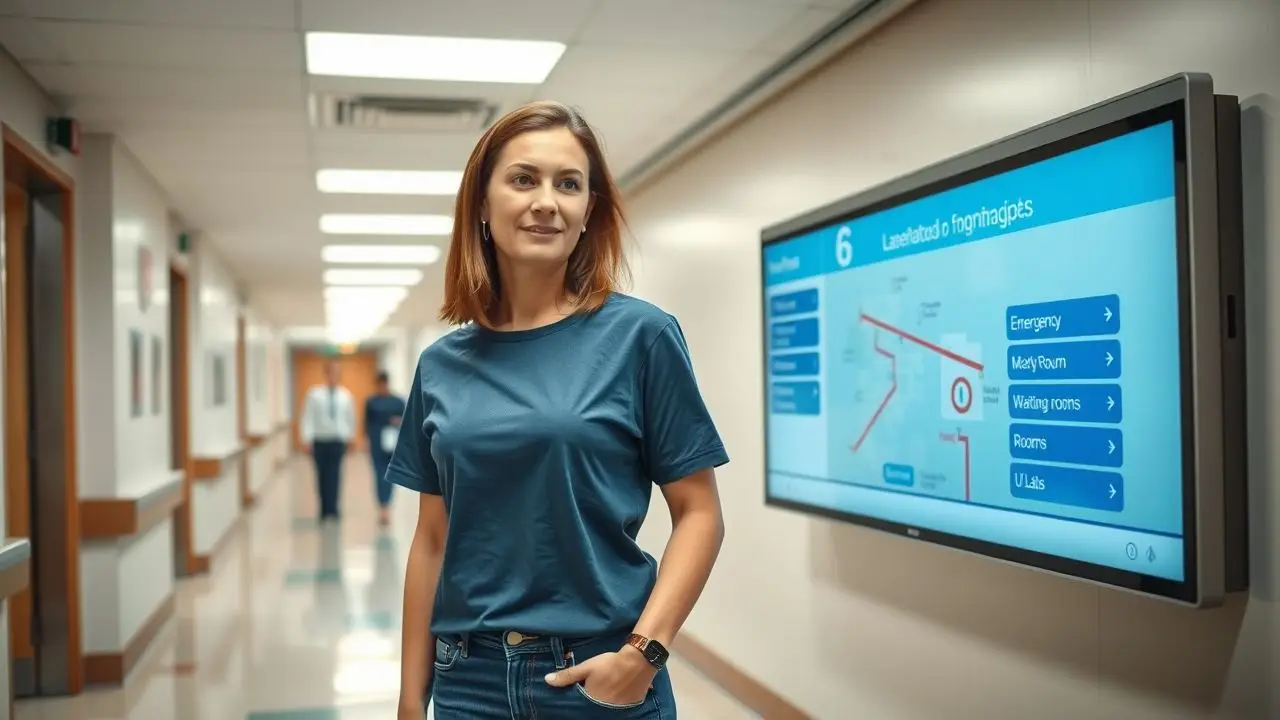
Digital wayfinding has made big changes in hospitals and clinics. New technology helps create clear signs that guide patients easily. Interactive displays show maps of the facility and highlight important areas like waiting rooms or labs.
These screens can change based on real-time information, such as emergency room wait times.
More hospitals are using digital signage to improve direction clarity. This boosts navigation efficiency for both patients and visitors. With bright colors and easy-to-read fonts, these signs make it simple for people to find their way around.
Digital signs also provide updates about services, helping keep everyone informed during their visit.
The Impact of Digital Signage on Wayfinding
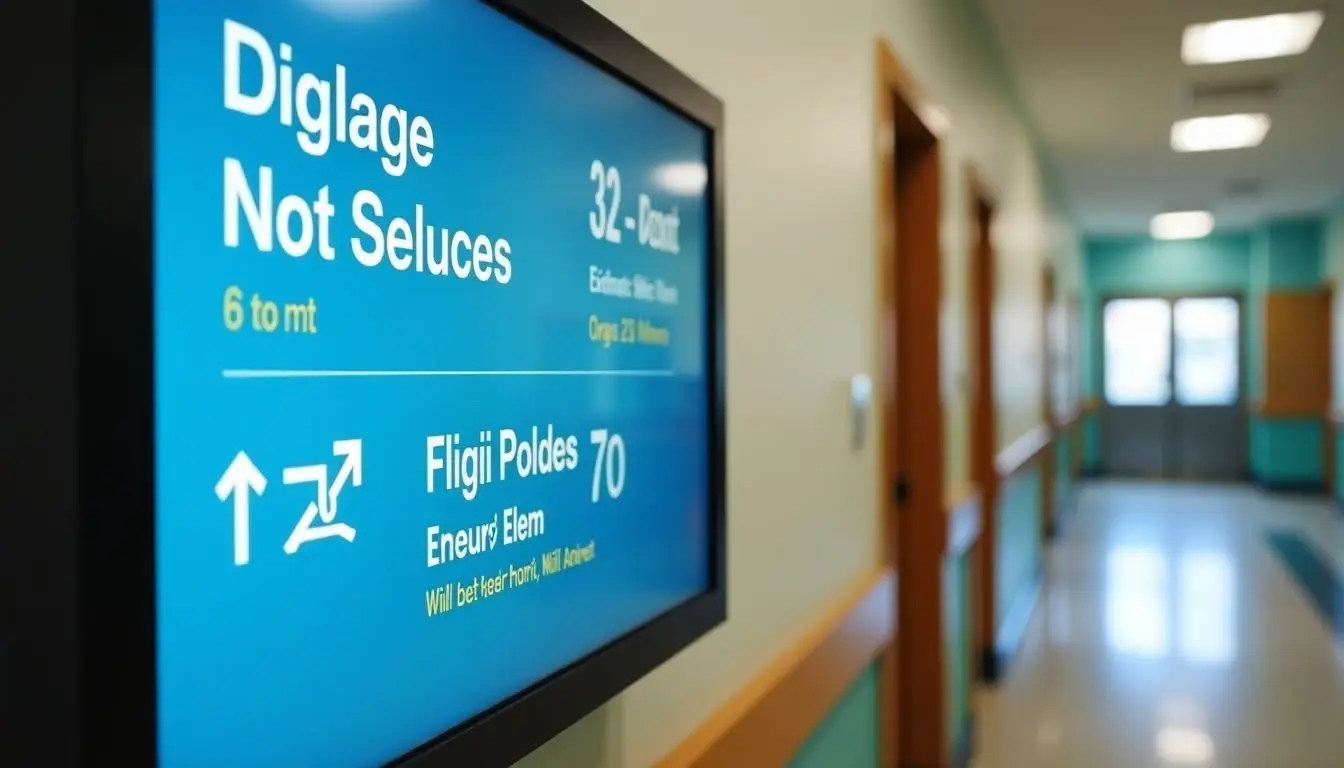
Digital signage makes it easier for patients and visitors to find their way. It provides clear directions and real-time updates, improving the overall experience in hospitals and clinics.
Strategic placement of digital signage
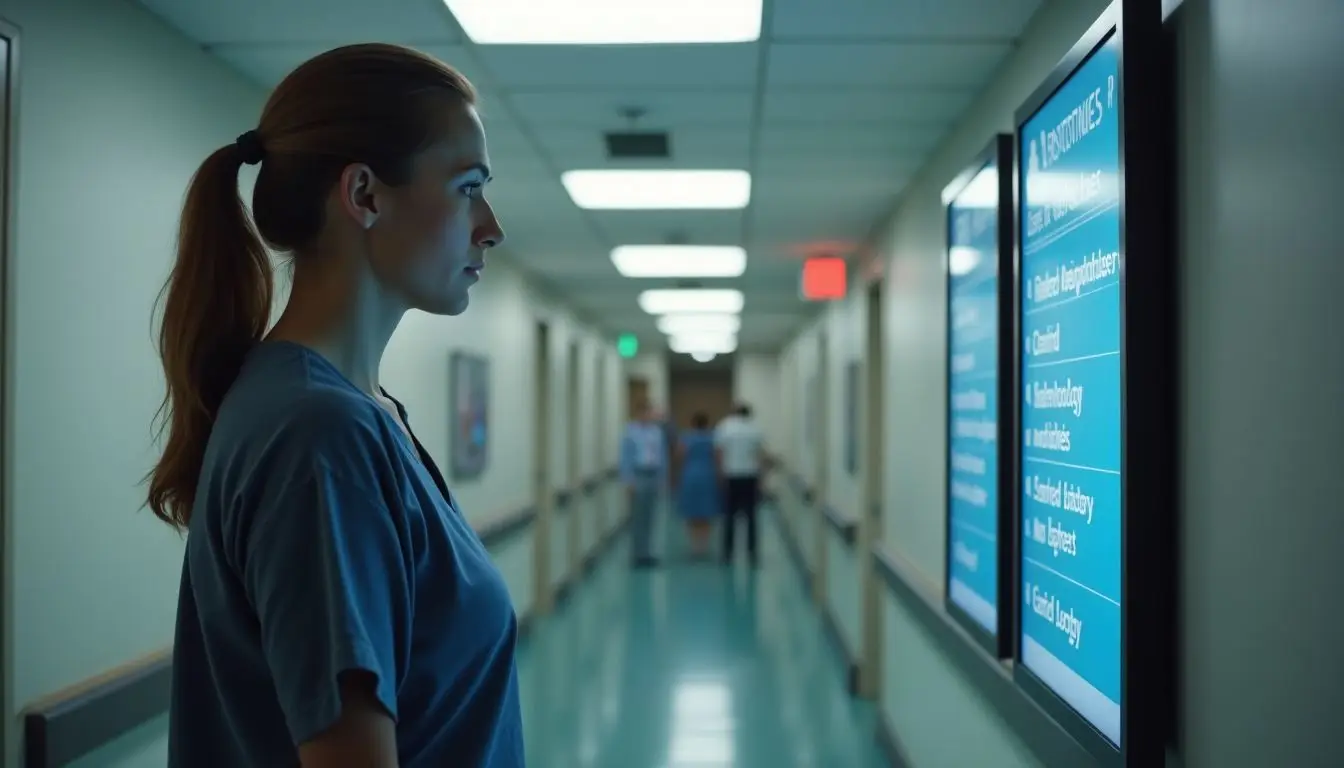
Digital signage plays a big role in helping people find their way in hospitals and clinics. Smart placement of these signs makes navigation easier for patients and visitors.
- Placing signs at entrances helps direct traffic. This gives clear paths to the main areas like registration and waiting rooms.
- Positioning screens near elevators shows floor information clearly. People can see which services are on each level without confusion.
- Digital signs in hallways guide toward departments like radiology or surgery. These signs reduce stress by showing exact distances to each department.
- Touchscreen kiosks located in busy areas allow for quick searches. Visitors can enter the name of a doctor or service and get instant directions.
- Using bright colors and large fonts catches attention quickly. These choices make it easier for people to read from a distance, enhancing overall wayfinding efficiency.
- Mapping features help patients with indoor navigation in large facilities. Signs can show step-by-step directions to their destination, improving patient engagement.
- Placing digital displays near popular waiting areas keeps people informed about wait times and important announcements. This builds engagement among visitors and reduces anxiety during long waits.
- Keeping signage updated is crucial for effective wayfinding. Information must reflect real-time changes like room assignments or event locations to avoid confusion.
- Collaborating with healthcare staff ensures the right messages appear on signs at key times throughout the day, making communication clearer for everyone involved.
- Feedback from users reveals which placements work best over time, allowing ongoing improvements to hospital display systems fine-tuned for better patient experience.
Enhancing patient and visitor experience
Digital signs help patients and visitors find their way easily. Clear images and words guide people to clinics, rooms, and services in hospitals. This reduces stress for those who may feel anxious about appointments or treatments.
Interactive maps on screens let users touch the display to get directions. These tools improve understanding of the space. Signage can also change messages quickly, offering real-time updates about delays or changes in schedules.
Healthcare digital signage enhances communication and keeps everyone informed during their visit.
Additional benefits of digital wayfinding signage
Digital wayfinding signage offers many benefits for hospitals and clinics. These signs make it easier for patients and visitors to find their way.
- Engaging displays capture attention. Bright colors and moving images draw people in. This helps them understand where to go faster.
- Easy updates save time and effort. Staff can change information quickly. This is useful for special events or changes in location.
- Multi-language support helps diverse visitors. Signs can show directions in different languages. This makes everyone feel welcome and informed.
- Interactive features allow users to search for locations easily. Touch screens enable people to get specific directions. This improves the overall user experience.
- Real-time information keeps everyone updated. Digital signs can show wait times or special announcements instantly.
- Promoting services boosts awareness of healthcare options. These signs can highlight outpatient center signage and other resources offered by the facility.
- Better patient flow reduces stress within the hospital setting, creating a smoother experience during visits.
- Enhanced aesthetics improve the look of a facility, making it feel modern and welcoming.
- Environmentally friendly options reduce waste by using fewer paper signs, contributing to a greener approach in healthcare settings.
- Cost-effective solutions lower long-term expenses by reducing the need for frequent printing of physical signage.
These benefits demonstrate how digital signs truly enhance wayfinding in hospitals and clinics, improving experiences for all who visit them.
Future Trends in Digital Wayfinding for Healthcare
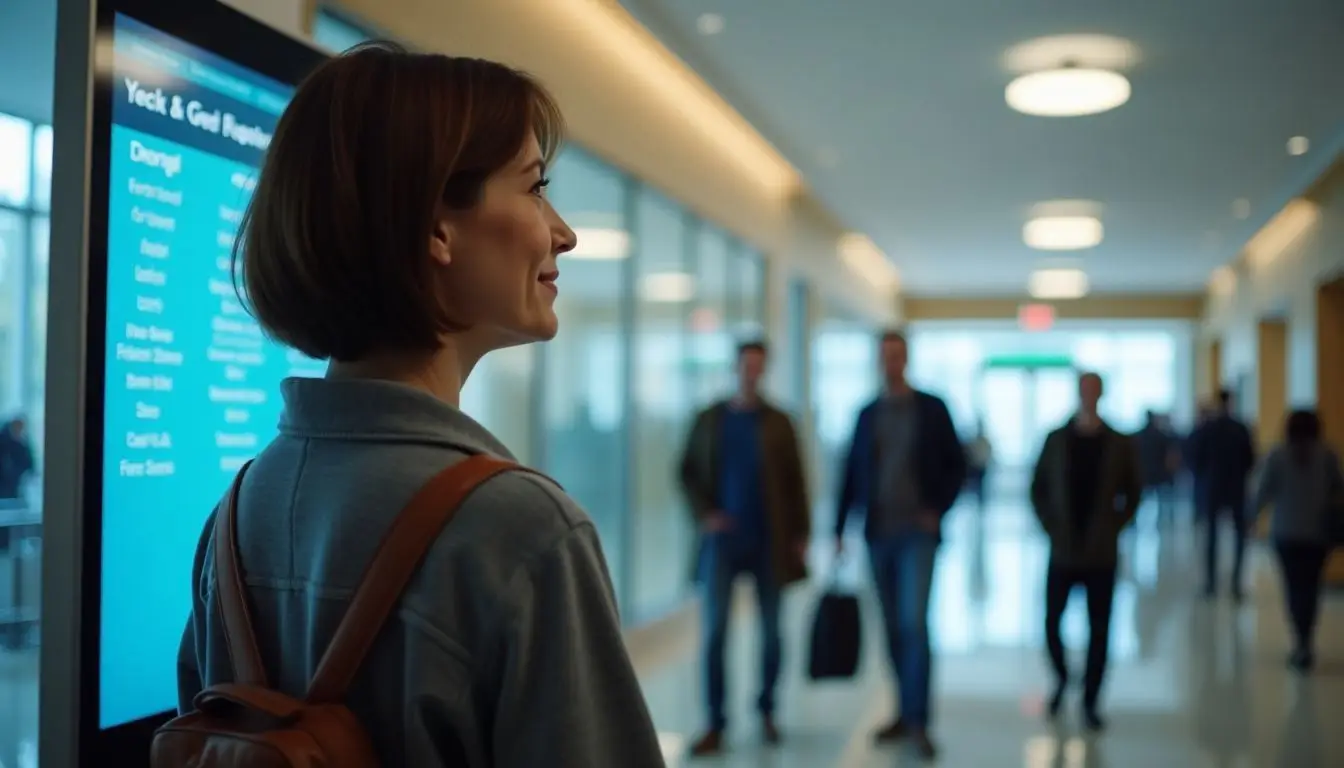
Future trends in digital wayfinding for healthcare focus on using AI and smart technology to make the patient experience better. These tools can help patients find their way easily and quickly.
Explore more about how these changes will shape the future of healthcare signage.
Utilizing AI and workflow automation
AI helps hospitals and clinics improve digital signs. It can show real-time information to patients and visitors. For example, AI can update wait times or direct people to the right department.
This means less confusion in busy areas.
Workflow automation streamlines tasks in healthcare settings. Digital signs work with this system to guide users quickly. Patients receive important updates about their appointments or changes in route instantly.
These smart tools boost engagement and make wayfinding easier for everyone involved.
Comprehensive wayfinding strategies
Comprehensive wayfinding strategies use digital signs to help people find their way in hospitals and clinics. These signs show clear directions to departments, waiting areas, and restrooms.
They also have maps to guide patients and visitors easily. With bright colors and easy-to-read fonts, digital signage grabs attention quickly. This improves engagement for everyone.
These strategies consider both technology and design. For example, touch screens let users search for locations. Voice commands can help those who cannot read well or are in a hurry.
Digital signs can display real-time updates about appointment times or waitlists too. Overall, healthcare digital signs make it easier for patients to get where they need without stress or confusion.
Conclusion
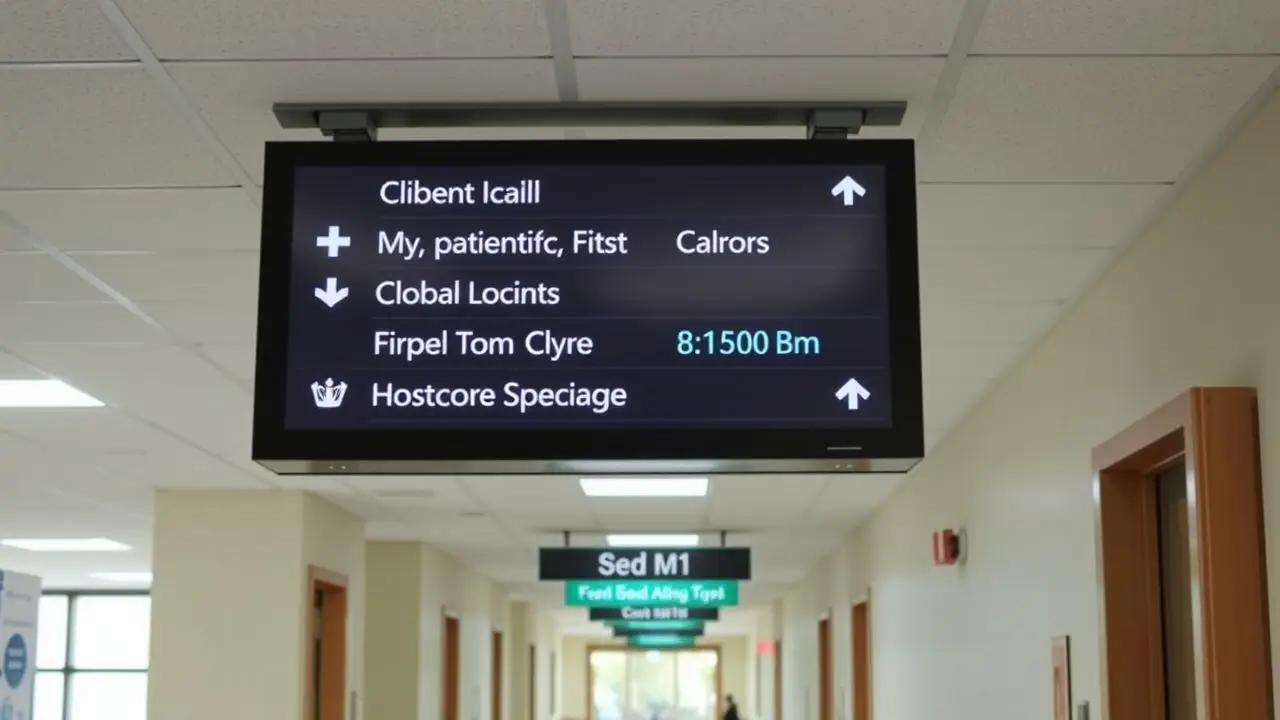
Digital signs make it easier to find your way in hospitals and clinics. They guide patients and visitors with clear directions. These signs improve the experience for everyone. As technology grows, digital wayfinding will become even better.
Clear signage is key to a stress-free visit.
FAQs
1. How do digital signs improve wayfinding in hospitals and clinics?
Digital signs help guide patients and visitors by providing clear directional signage, making it easier to navigate through the hospital or clinic.
2. Can digital signs boost engagement in hospitals and clinics?
Yes, digital signs can boost engagement by providing interactive experiences for patients and visitors, keeping them informed about services and updates.
3. What are the benefits of using digital signage instead of traditional signage in healthcare settings?
Digital signage offers real-time updates, easy navigation with clear directions, improved patient experience which could lead to better engagement compared to traditional static signage.
4. Are there any specific requirements for implementing digital signs in a healthcare setting?
The primary requirement is that the information displayed should be clear and easily understandable for all users – from first time visitors to regular patients. The sign’s location should also be strategic so as not to confuse or mislead anyone.
